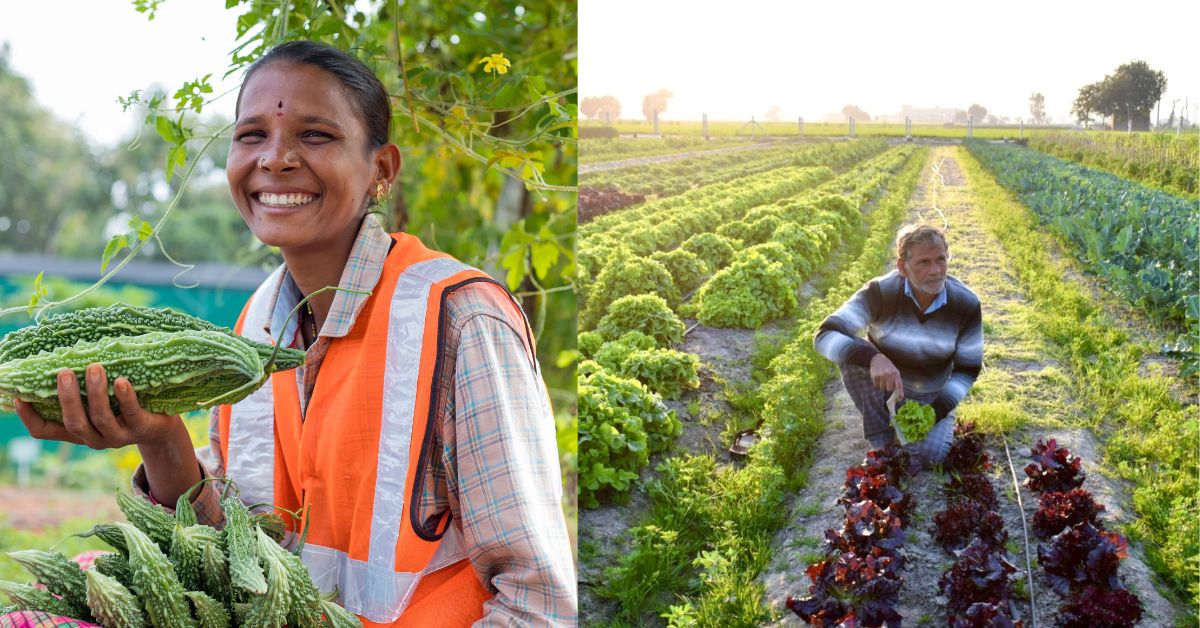
This article is created by The Better India and sponsored by Wingify Earth.
Meet Vikash Abraham and his team at Urban Farms Co, which uses the lucrative regenerative farming model to prevent stubble burning and help lakhs of farmer earn more through chemical-free farming, for which it has now won international recognition.
Every winter, the National Capital Region is burdened under thick layers of pollution, smog, and smoke — which studies and news reports say is akin to smoking around 10 cigarettes a day.
And each year, the public and governments turn their attention to farmers in the nearby regions of Punjab and Haryana, who burn crop residue and stubble from the year’s harvest. This activity is among the largest contributors to NCR’s annual public health crisis.
But many farmers say they don’t have a choice.
As Paramjit Singh from Punjab, told Reuters, “If, instead of burning, the stubble has to be disposed of in any other manner, then that involves a lot of expenditure.”
He added that these fires hurt the immediate local population worse than they do those living in Delhi. “It will reach Delhi much later but the first [casualty] is the farmer because he is standing in the middle of it when he burns it…He is helpless, he is not lighting it up out of choice.”

Many farmers say they don’t have a choice when it comes to stubble burning. (Source: Shutterstock)
It is not to say, however, that alternatives haven’t been offered. But the solutions have been rejected by many who find them unfeasible due to a lack of long-term support by intervening authorities.
Burning crop residue also affects the quality of resultant soil — a report by the UN states that up to 40% of the planet’s land is degraded, which threatens roughly half the global GDP.
A possible solution to this may, however, lie in a lucrative farming movement brewing on the outskirts of NCR. Termed ‘regenerative farming’, this could help improve climate and food security in India, say the members of Urban Farms Co.
The firm is a subset of the Naandi Foundation, which was founded in 1998 and works across 17 Indian states to tackle growing poverty in the country. It has particularly worked with tribal farmers to sustainably grow arabica coffee under its brand — Araku Coffee, which has since gained global recognition.
Under Naandi, Urban Farms Co focusses on farmers tackling the challenge of depleted soil through regenerative farming.
Where innovation creates sustainability
Saumya Sen, head of brand and marketing at Urban Farms Co, says, “Regenerative farming is focussed on bringing dead soil back to life, reinvigorating nutrient cycles in nature, and increasing organic bioavailable carbon, micronutrients, and living bacterial colonies. Conceptually, this shapes what we call ‘living soil’ or ‘humus’.”
At the helm of this model is Vikash Abraham, the chief strategy officer at Naandi and an engineer who eventually ventured into “creating regenerative agriculture templates for small farmers”.

Vikash Abraham (Source: Urban Farms Co)
“Naandi has always looked at innovative ways to create sustainability not just from an environmental point of view, but also from a cash flow or business perspective,” he explains. “Since 2010, we’ve worked to connect finance and environment regeneration in a bid to increase food quality and provide livelihoods for farmers.”
“This sort of farming gives very specific importance to sequestering carbon,” notes Sen.
Regenerative agriculture relies on rehabilitating and enhancing the entire ecosystem of the farm by ensuring that plants get their nutrition through biological cycles. As per the Rodale Institute, “It is a method of farming that improves the resources it uses, rather than destroying or depleting them.”
While practised since time immemorial by Native American farmers, in recent years, it has gained ground by combining the practice with other modes of sustainable agriculture — keyline design, permaculture, agroforestry, etc.
At Urban Farms, this regenerative model uses the stubble leftover after harvest to enrich the soil. At its Regenerative Farming Hub in Palla village near New Delhi, the organisation has created a system to ensure chemical-free farming that provides greater nutrient density to the crops. These ‘hubs’ also serve as procurement centres and guarantee ‘quality-based buy-back’.
‘Everything a farmer needs’
Vikash explains that through their work with farmers at Naandi, they realised that the scalability of such a model was integral. “As far as you’re talking about environmental change, whatever model you implement needs to be scalable. Small changes were not really addressing the larger concerns of climate change, loss of soil fertility, and consumption of groundwater.”
“If you talk to an organic farmer, they will tell you that it takes two to three years for soil fertility to return. Our concern was to get it back in a short period of time for a land that was burdened with chemicals,” he continues.
The hub in Palla, he notes, aims to address “everything that a farmer needs” to practise regenerative agriculture. “…be it fertility applications, foliar sprays, flea treatments, the knowledge, the demo plots, training…we also work with youths in the area to train them in the practice, give them tools and equipment, and build a services team to help farmers with labour.”
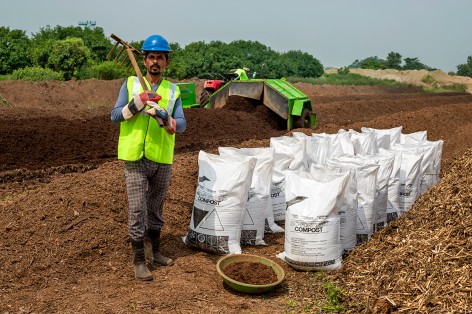
The hub in Pallaaims to address “everything that a farmer needs” to practise regenerative agriculture. (Source: Urban Farms Co)
A new perspective on agriculture
The most important aspect that this hub promises is a market. “Farmers get a market that respects the quality of their produce, and where the price of the product is higher than what they would otherwise get during those months.”
“As much as 99% of the raw material needed to make the fertiliser, foliar sprays, etc, is what people otherwise consider as ‘waste’ in the area and dispose of in an environmentally-unfriendly manner, largely via burning.”
“In Delhi, we have three large sources — stubble, weeds, and cow dung,” he explains, adding that these are procured via local panchayats looking to clear swathes of land of invasive weeds, as well as gaushalas that discard cow dung in open lands, leading to the emission of large amounts of methane.
This material is then converted to compost at the hub, with the aim to look at this product through a “plant food perspective”.
“We look at the CN (carbon-nitrogen) ratio, the biodiversity of micronutrients going in…we use aerobic composting and inoculate the compost with probiotic colonies. The team at the hub monitors the temperature, moisture, and aeration every day.”
“The results, too, are much more positive. The product that comes out of it is of much, much superior quality.”
As per Mongabay, “Food grown on regenerative farms contained, on average, more magnesium, calcium, potassium and zinc; more vitamins…and more phytochemicals….Soil health appears to influence phytochemical levels in crops, indicating that regenerative farming systems can enhance dietary levels of compounds known to reduce the risk of various chronic diseases.”
‘They thought we were crazy.’
He adds, “When we started in 2019, we went to this agricultural belt where for decades the farming had been chemical and synthetic-fertiliser oriented. They saw us bring in all this cow dung, stubble, and machinery….there was a level of fascination but they believed we were out of our minds. Till we built our first demo plot, not a single farmer joined our programme. But the method was transparent and incited curiosity, and when they saw the first cycle of produce, they came around.”
Sanjay Gehlot, a 63-year-old farmer from Tigi Pur village near the capital, has been working with Urban Farms Co for the last two years. He had been practising chemical agriculture for years before he heard about the company.
He explains, “With chemical farming, firstly, the quality of the produce is not good. We end up using chemicals very frequently — say every 15 days or so. But if you don’t put enough chemical fertiliser, then you don’t get enough produce. Pest attacks, diseases, and infections are rampant. We were looking at farming from a very commercial angle.”
“The sprays and material that Urban Farms Co gives us, however, rejuvenate the soil and earth in ways we haven’t really seen before. That has been among the biggest changes since switching to regenerative farming. Our harvest is better, and it gets a better response as well,” he continues. “We’ve been able to grow wheat, broccoli, cabbage, bitter gourd…. And then the company buys the harvest from us.”
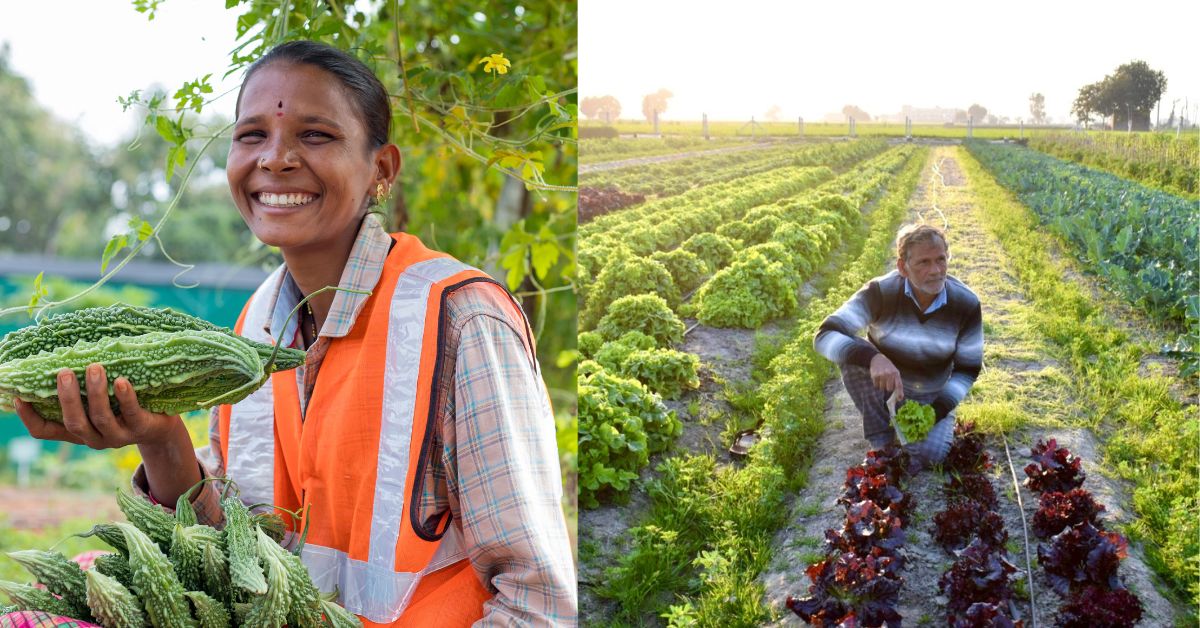
Regenerative farming is said to give more nutrient-rich produce. (Source: Urban Farms Co)
Sanjay says that over and above stability in livelihood and income, this model of farming offers a form of protection. “The company promises us that whatever you grow, we will buy from you. If we go on our own, the rates are sometimes so low that the farmer has to throw their produce away. That hasn’t been the case with Urban Farms Co because no matter how much the rate falls in the market, they have set a minimum price that they will give to us to cover our survival, input costs, etc.”
As per the Rockefeller Foundation, Urban Farms Co has helped around 1,50,000 farmers switch to regenerative farming. It supplies about 10-12 tonnes of vegetables every day across Delhi’s supermarkets as well as online stores.
From its Palla hub alone, the company has produced more than 3,000 MT (metric tonnes) of compost using 7,000 MT of organic biomass. “This way, we are able to prevent close to 1,500 MT of CO2 from being released through burning every year,” Vikash explains. “Our farm practices ensure that agriculture is brought back to a carbon-positive act, and around 3-5 tonnes of carbon is sequestered per hectare.”
For their work, the organisation was awarded by the Rockefeller Foundation as one of the top 10 ‘Visionaries’ in the world for the prestigious ‘Food Vision 2050 Prize’.
Sanjay notes, “The produce we grow through regenerative farming is of the quality that we would actually want to give our customers. Mann ki tahsali milti hai (It gives you satisfaction). All of us who are associated with Urban Farms Co have a common goal that the produce we give our customers must be good. That’s why we’re here today.”

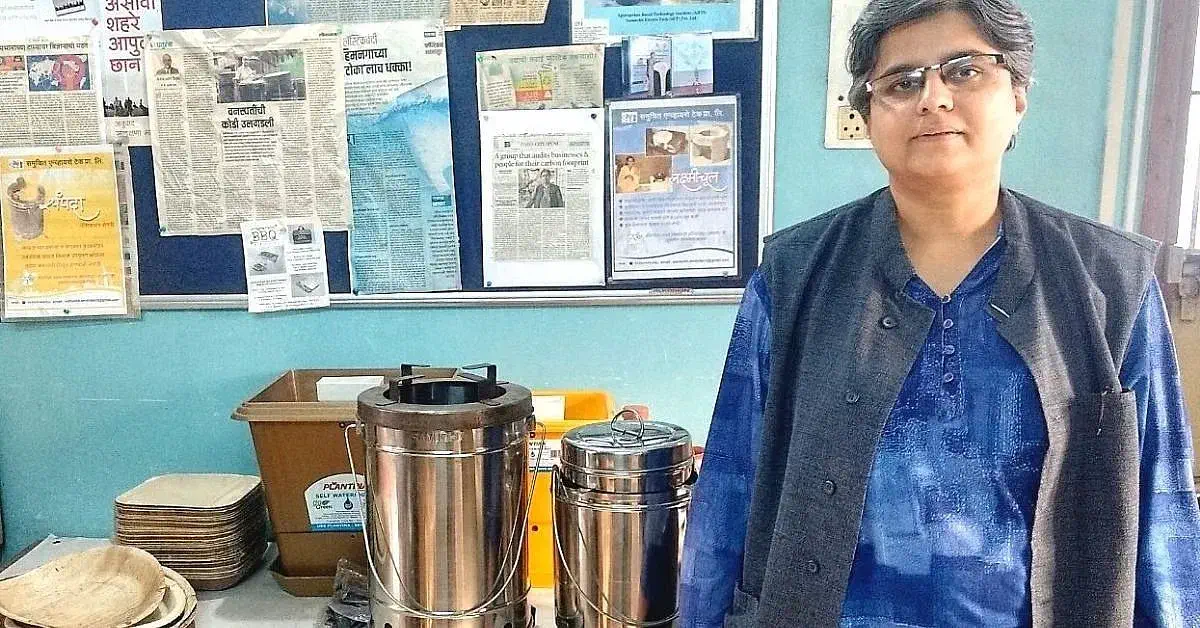
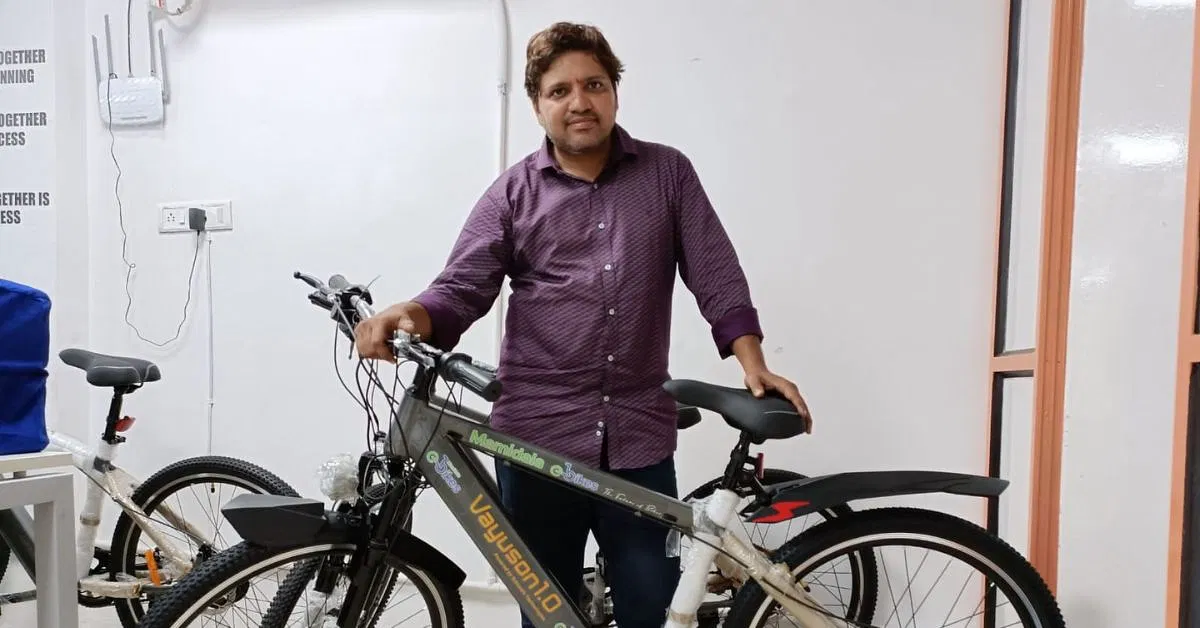
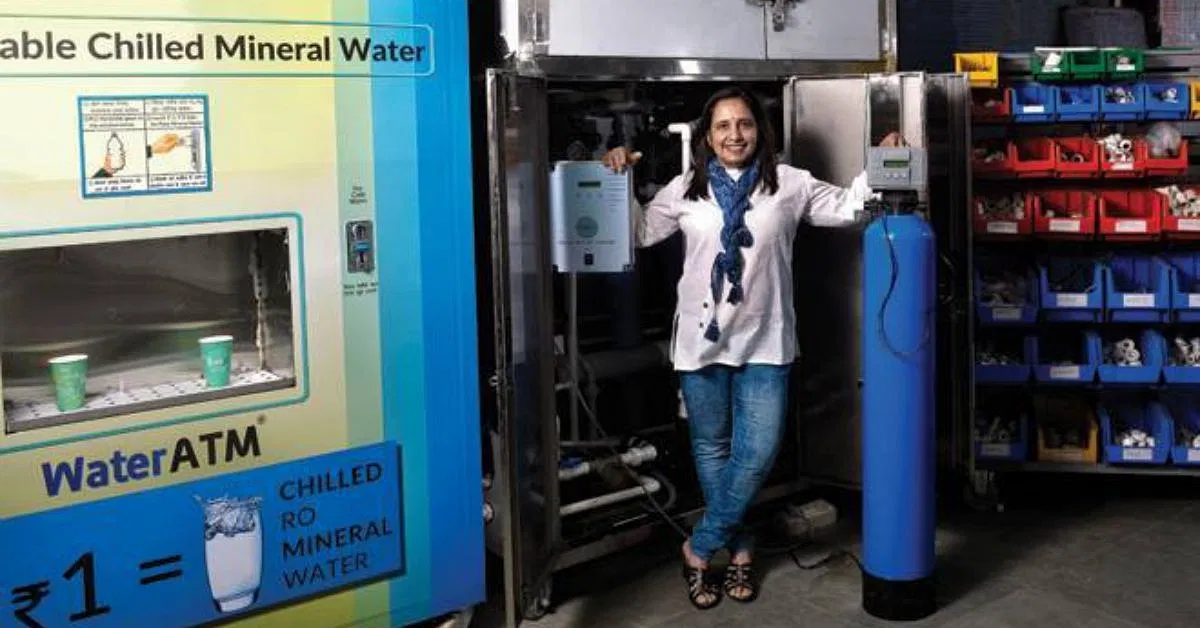
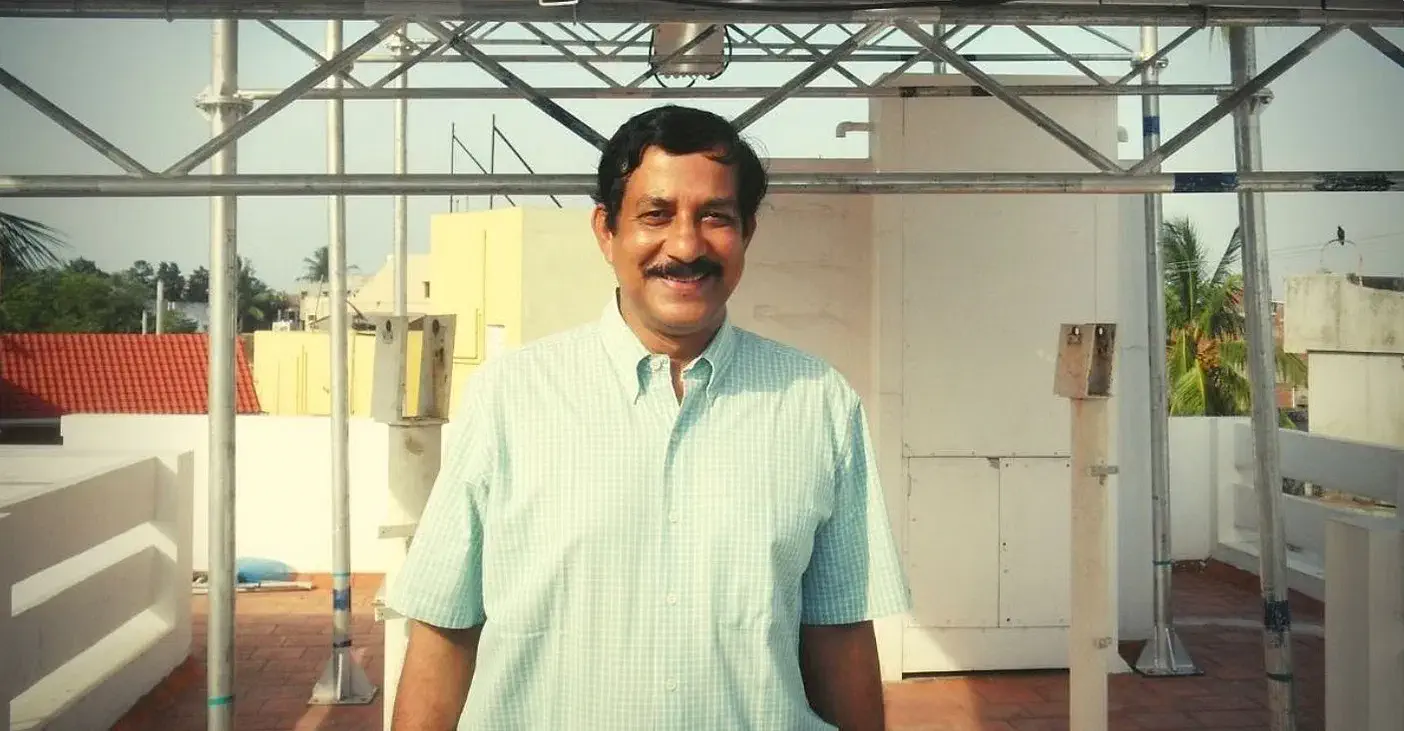
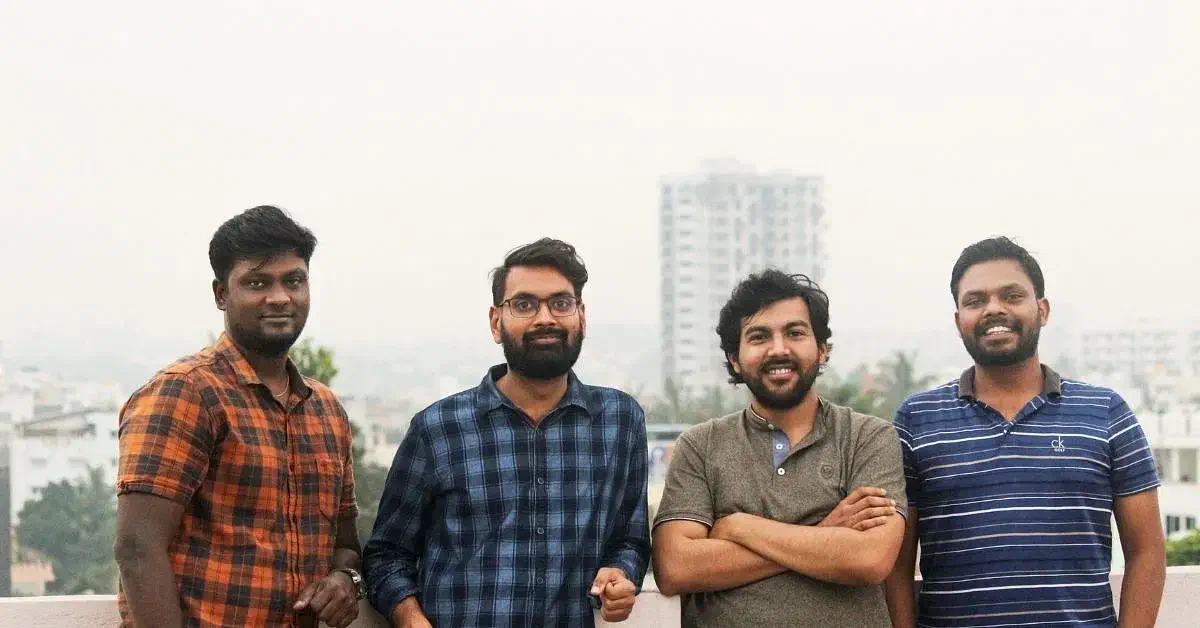
Leave A Comment
Your email address will not be published. Required fields are marked.